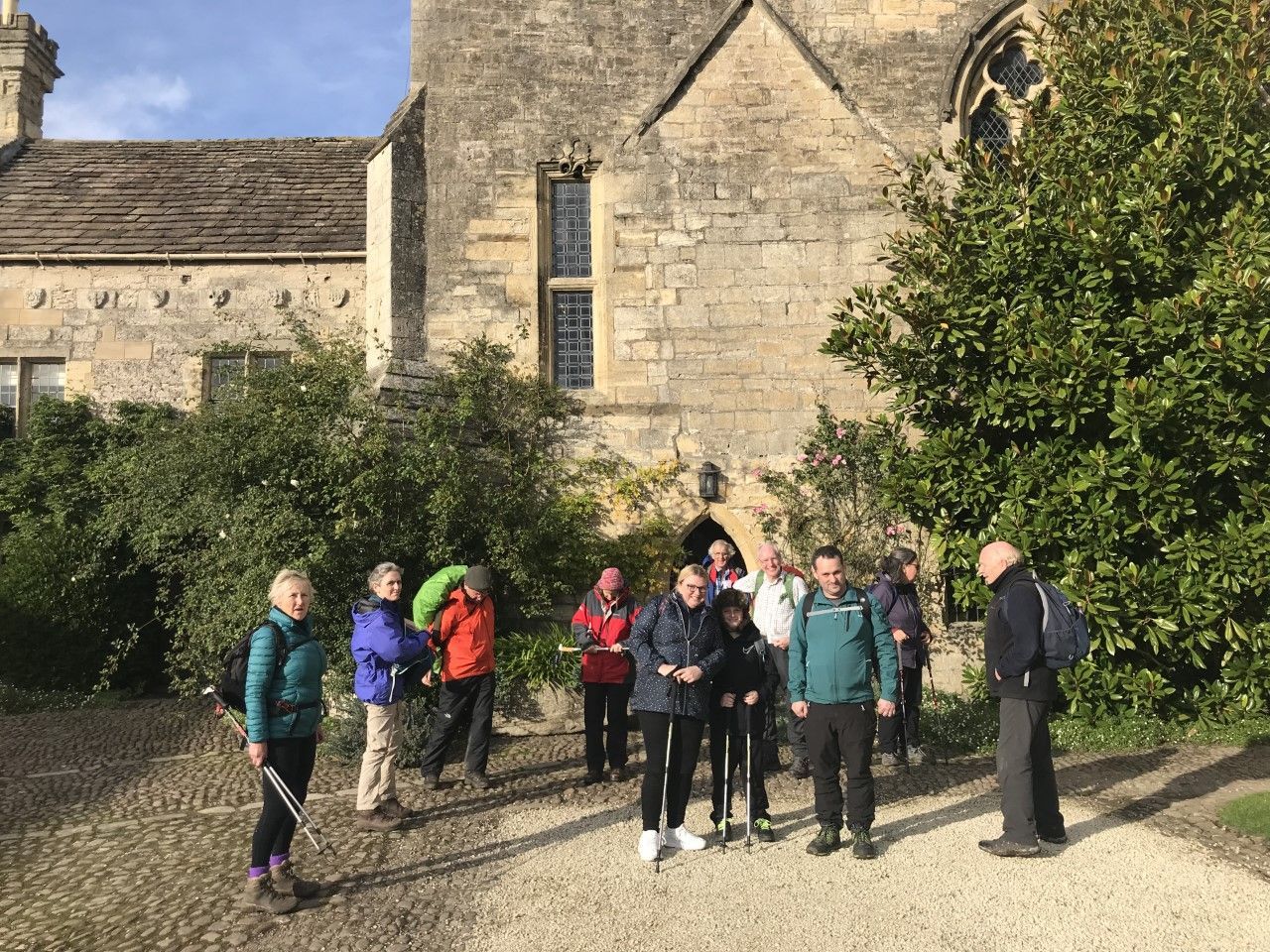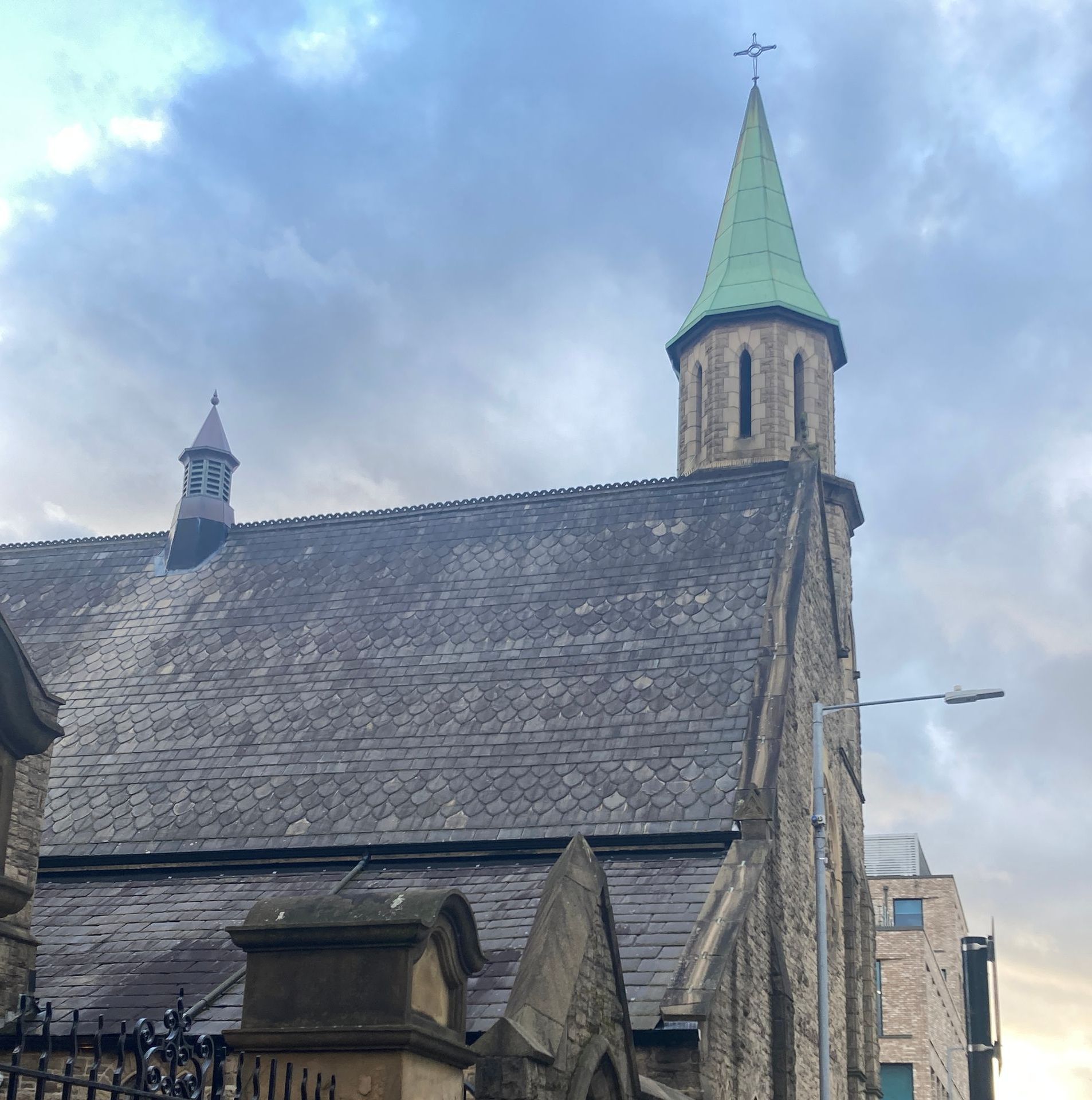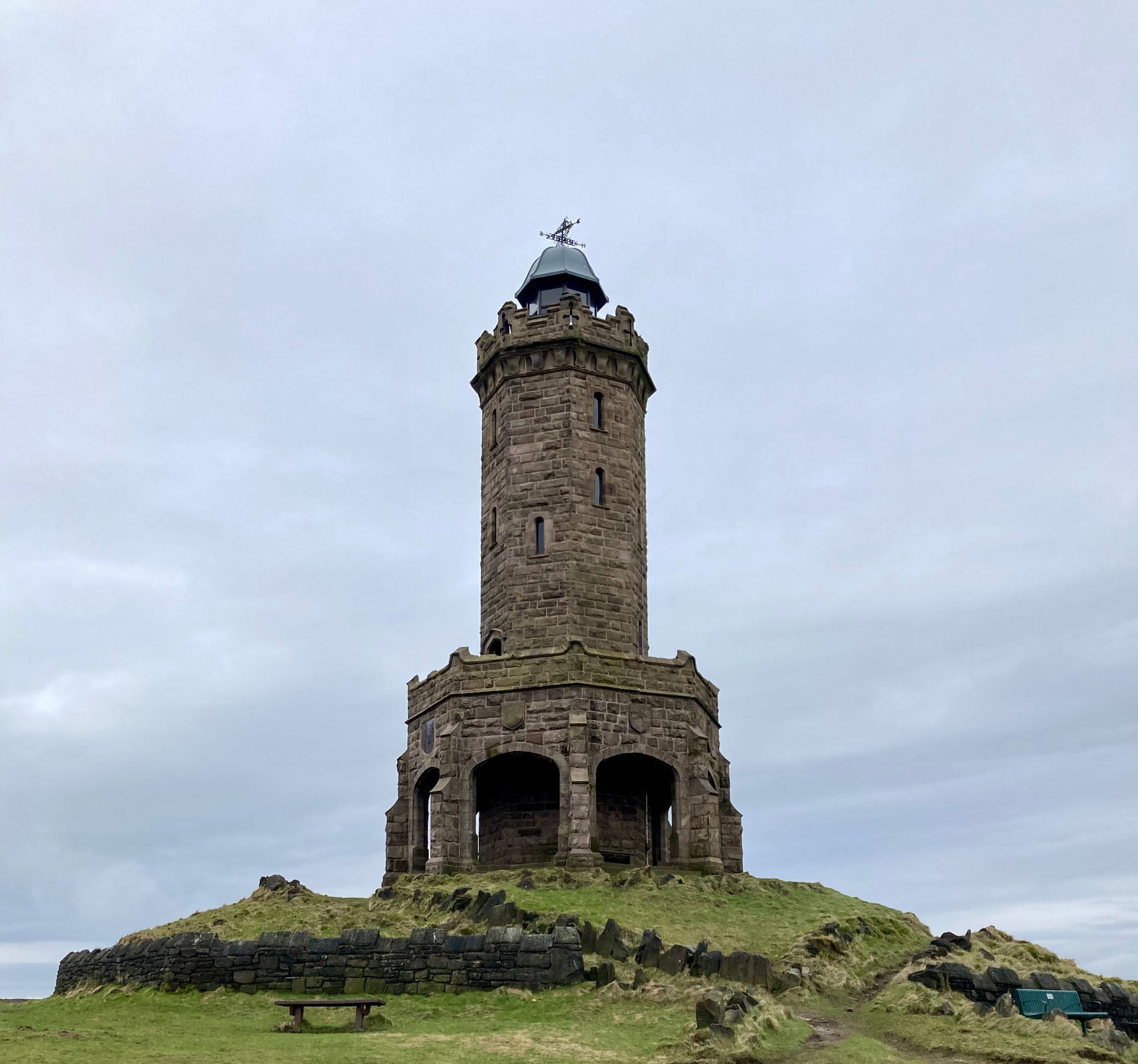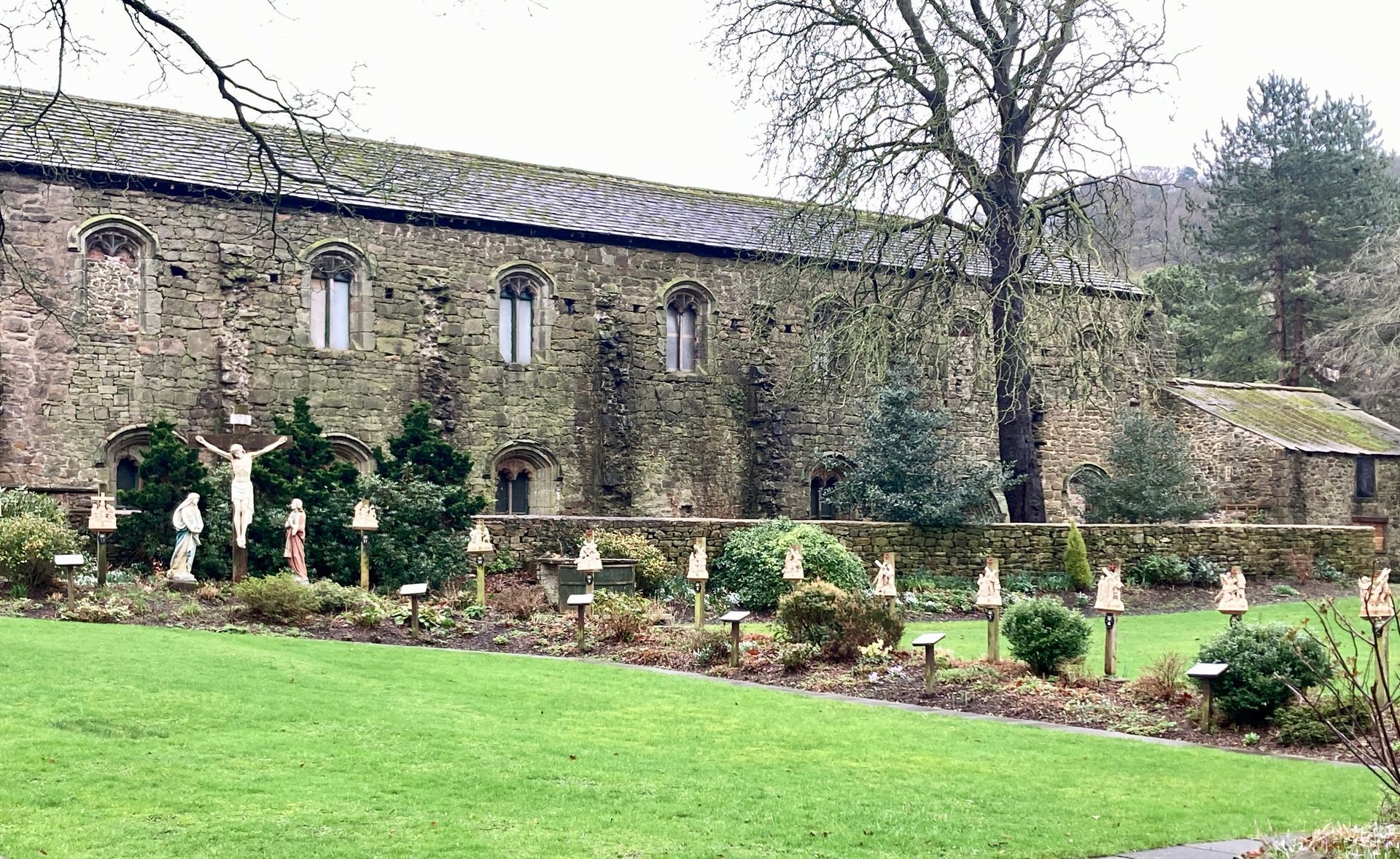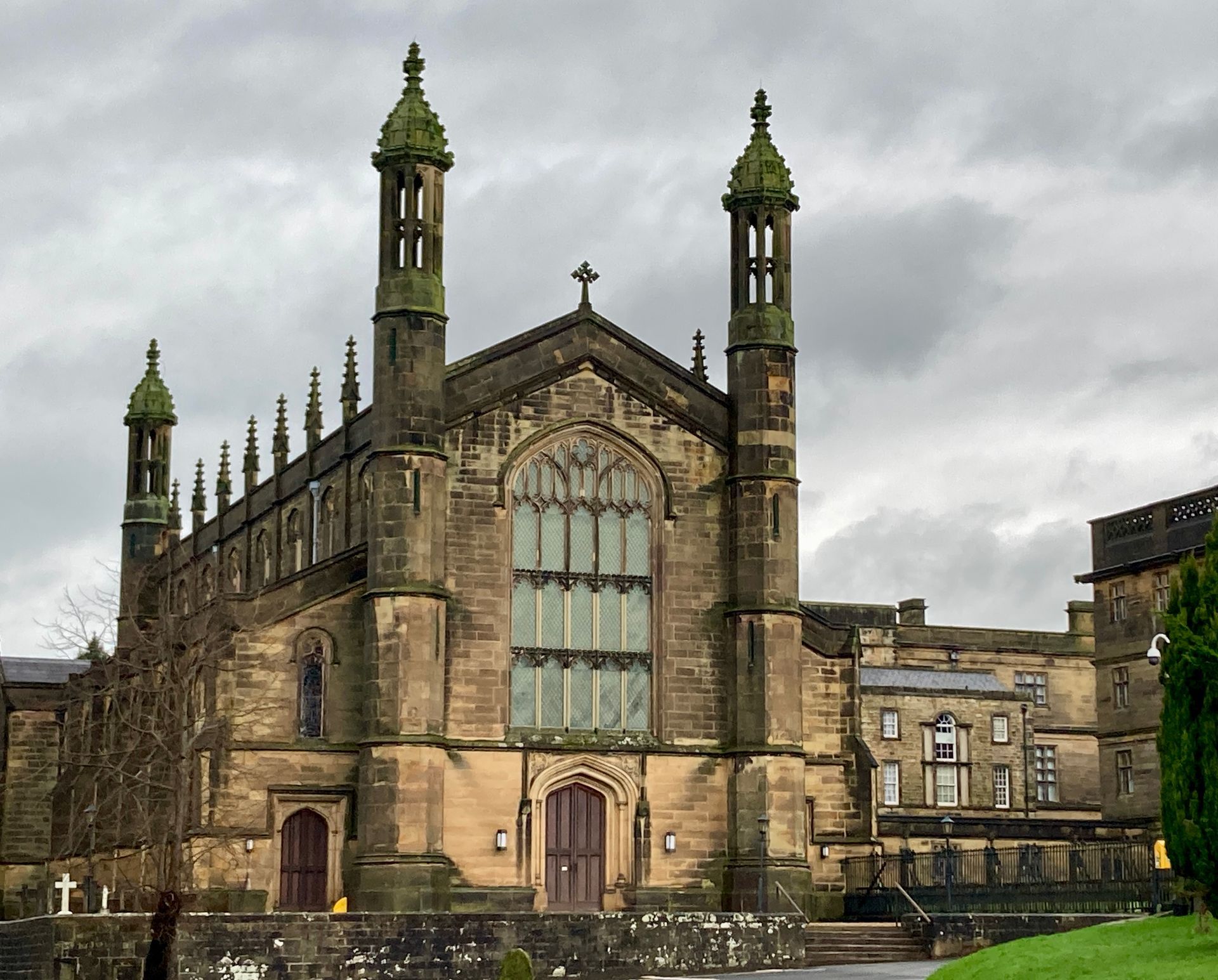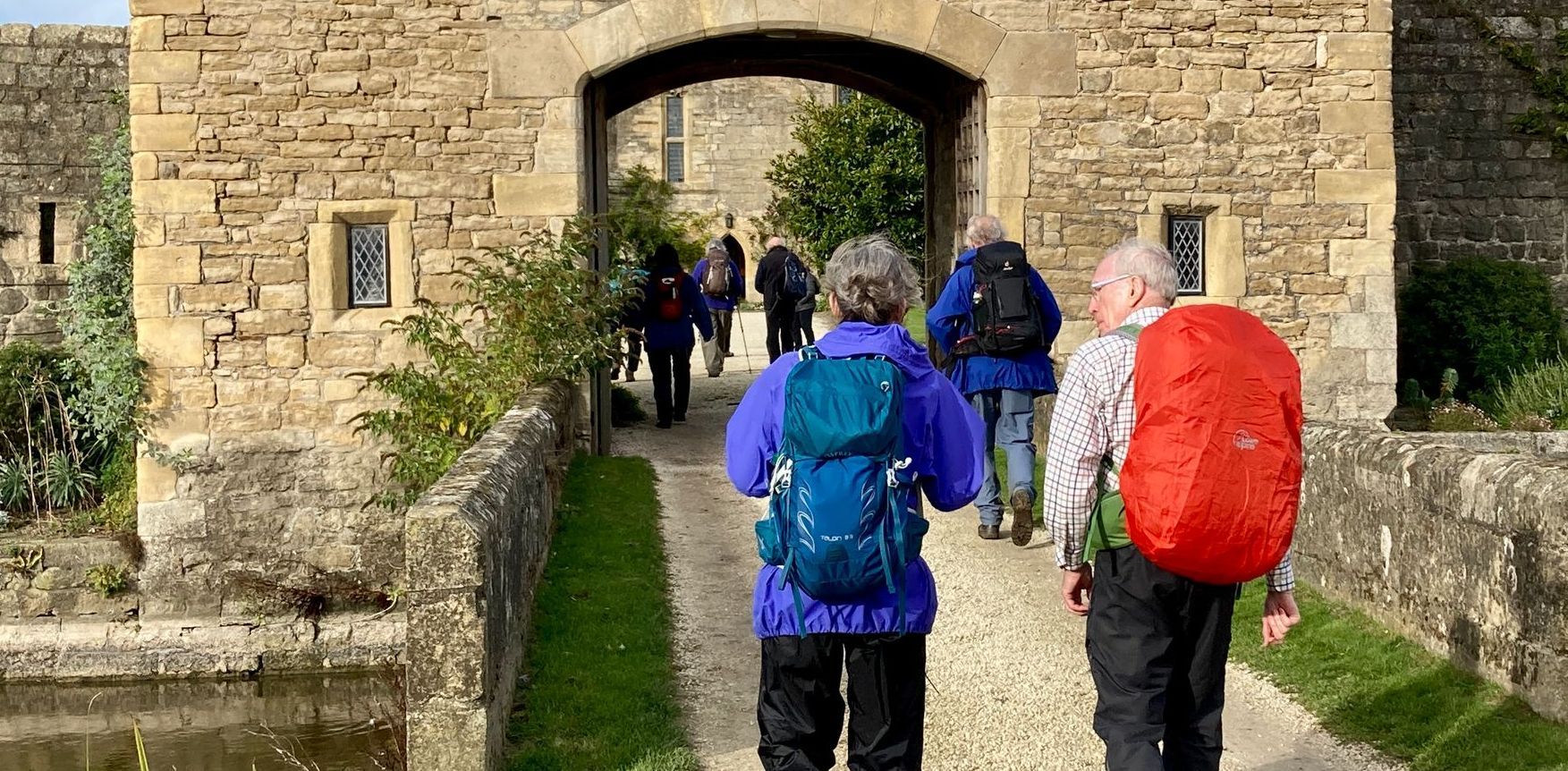St Theodore's Way
A Pilgrim Way for the Diocese of Salford from the Cathedral of St John the Evangelist in Salford to the Christian Heritage Centre, St Theodore's House, Stonyhurst College
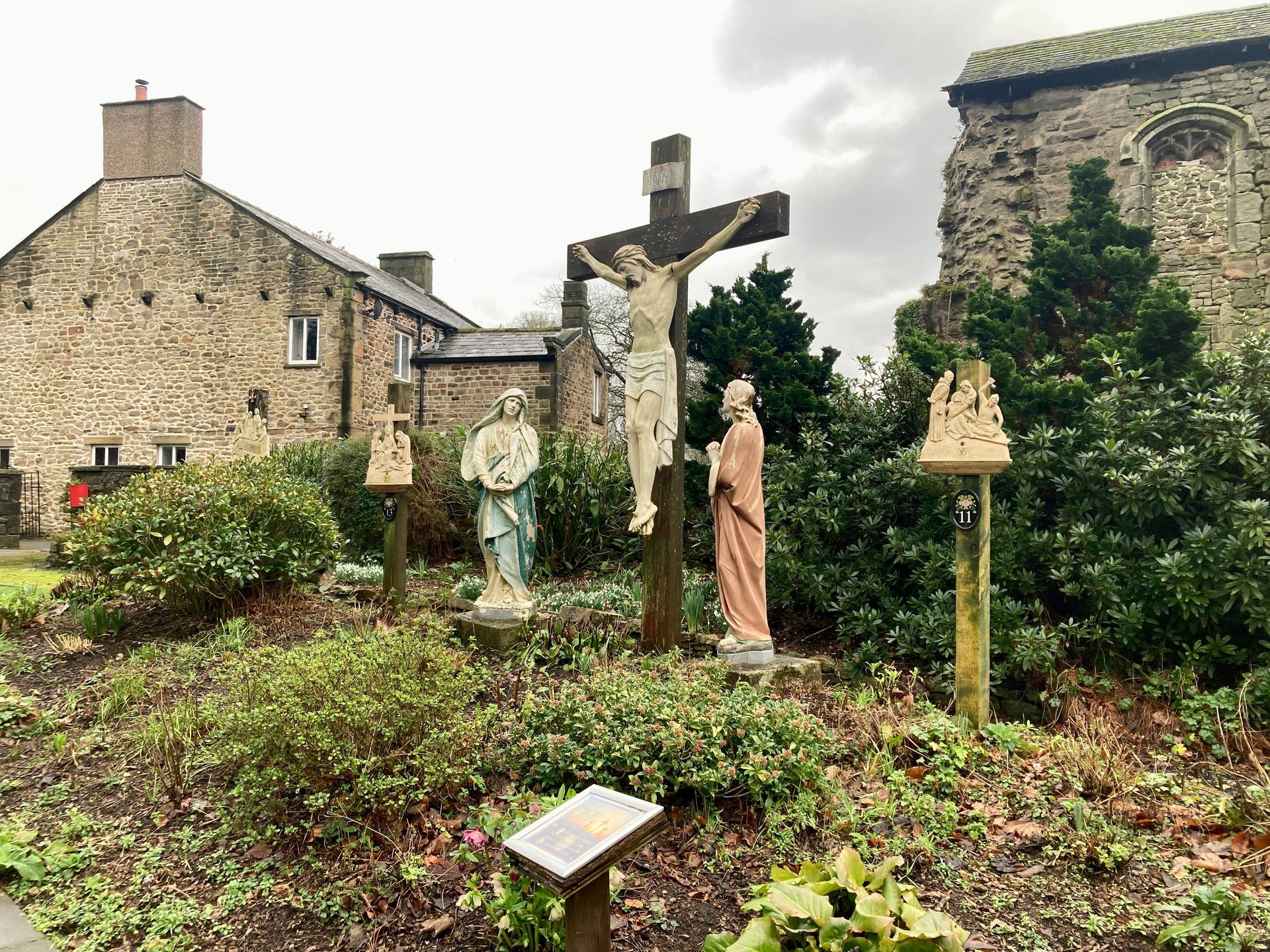
Stations of the Cross at the Church of the English Martyrs, Whalley
About the route
Theodore of Tarsus was Archbishop of Canterbury from 668 to 690. He helped to unify the English Church after the Synod of Whitby and successfully promoted Anglo-Saxon scholarship.
The Way follows the River Irwell north out of Salford, diverting to the Church of St Sebastian in Charlestown. The route follows the Salford Trail, the Irwell Sculpture Trail and the towpath of the Manchester, Bolton & Bury Canal to reach Bolton. Here the Church of St Patrick and the former Ukrainian Catholic Church of All Saints are visited.
The route continues north passing the Church of the Holy Infant & St Anthony in Astley Bridge, to Dimple, then follows the Wilton Weavers Way across moorland. The Way descends to the Church of the Sacred Heart in Darwen and then continues north, passing near the Church of Our Lady of Perpetual Succour in Higher Croft.
The Way traverses Blackburn passing Blackburn Anglican Cathedral, the Church of St Anne, the Polish Catholic Centre and the Church of the Holy Souls. The Way then crosses farmland to the former Cistercian Abbey and the Church of the English Martyrs at Whalley. Finally the Way crosses farmland to reach the Church of St Peter and Theodore House at Stonyhurst College.
You can find out more about the Way and download the GPX file by clicking on the LEARN MORE tab in the
interactive map below
Guidance
Using the tabs in this section you can find the information you need for your pilgrimage.
The Outer Way provides practical advice about the route.
The Inner Way describes the spiritual highlights.
Using the button below you can download details of the inner and outer ways and the walking guidance and maps.
Stages: route, food & drink, accommodation and public transport
1: The Cathedral of St John the Evangelist, Salford, to the Church of St Patrick, Bolton - 11.8 miles
The Cathedral can be reached by bus or foot from all the main Manchester rail and coach stations. The Way follows a green corridor out of Manchester beside the River Irwell and finally along a cycle path. It is mainly off road. There are plenty of pubs, cafés, restaurants and accommodation options in Manchester and Bolton. Along the route there is a pub and a restaurant downhill from the path at Ringley. The bus network can be accessed at Gerard Rd, Agecroft Rd, the A667, Hall Lane, Radcliffe Rd and Manchester Rd. There are railway and coach stations in Bolton.
2: The Church of St Patrick, Bolton to Walmsley Unitarian Chapel, Dimple – 5 miles
The Way is urban until it reaches Longworth Lane on the northern outskirts of Bolton. After this there is a delightful walk across quiet countryside to reach the charming Unitarian chapel at Dimple. There are several pubs along the first part of the route. The Bolton bus network can be accessed easily enroute before Longworth Lane and again at Dimple.
3: Walmsley Unitarian Chapel, Dimple, to the Church of the Sacred Heart, Darwen – 8.5 miles
The Way crosses remote moorland but the climbs are slow and the walking exhilarating. Finally the Way descends to Darwen and reaches the main road through a park. There are no facilities on this section until a pub is reached on the outskirts of Darwen at Sunnyhurst. There are shops, pubs and a café in Darwen. There is a car park on the moors near the route at Crookfield Rd. There is access to the bus network on the main road in Darwen.
4: The Church of the Sacred Heart, Darwen to the Church of St Anne, Blackburn – 4.8 miles
After some road walking the Way is through a park and then along a towpath into Blackburn, passing Blackburn Anglican Cathedral. There is a pub just after passing under the M65 and plenty of shops, cafés, pubs, restaurants and accommodation in Blackburn. The route passes close to Blackburn’s railway and bus stations.
5: The Church of St Anne, Blackburn to the Church of the English Martyrs, Whalley – 8.1 miles
The route passes the Polish centre and climbs a hill to the site of the former Marist College. The Way is then downhill to reach the Church of the Holy Souls in Brownhill. NB The next part of this section involves stepping-stones and can be avoided via a short detour. The path then joins the Ribble Valley Jubilee trail and follows this to Whalley along paths and quiet lanes. There is a pub at Brownhill and a small supermarket. There is another pub at York village. There are shops, cafés, pubs, restaurants and accommodation in Whalley. Whalley Abbey has a café and B&B accommodation. There is a railway station in Whalley as well as buses to Blackburn and Clitheroe.
6: The Church of the English Martyrs, Whalley, to Stonyhurst College, Clitheroe – 4.5 miles
The route starts across farmland and then follows quiet lanes to Stonyhurst. There are hotels and pubs at Great Mitton. Theodore House offers B&B accommodation and there is a pub and hotel at the nearby village of Hurst Green. There are buses to Whalley and Clitheroe from where Knowles Brow reaches the B6234 and from the Shireburn Arms in Hurst Green.
Public transport links
Trains:
https://www.nationalrail.co.uk/
Coaches:
https://www.nationalexpress.com/en
Buses:
Pilgrim people and places
NB Many churches are closed during daylight hours. If you would like to visit the churches and shrines it is best to check the parish website first. You can also email or phone the parish office to see is someone would be willing to open the church. Please be aware that many priests cover more than one church and so may live many miles away.
The Cathedral of St John the Evangelist, Salford
This is said to be the first Catholic church since the Reformation built on a cruciform plan, and one of the largest, most ambitious and impressive Catholic churches of its day. The building was inaugurated in 1844 and 6000 people are said to have attended the laying of the foundation stone. When it was opened in 1848 the service was attended by Catholics from all over the country, including eight English bishops. The various fixtures and fittings included a magnificent reredos and sanctuary furnishings. At the restoration of the Catholic hierarchy in 1850 the Diocese of Salford was created, and the church elevated to cathedral status. In 1972 a new sanctuary with an altar was formed in the crossing of the nave. In 1983 another reordering involved the high altar, pulpit, side altars and other furnishings and in 1990 the reredos was reduced to its base. During the 2020s the building will be restored, re-roofed, and some of the Victorian heritage reinstated.
The Church of St Sebastian, Pendleton
During the C19 the area was dominated by industry and poor housing. A community of Catholics formed, and Mass was first said in a school on Church Street in 1858. In 1897 the Dominicans took over the mission and a church, dedicated to St Sebastian, was consecrated in 1901. It was demolished in 1971 and the present church built in 1972-3. Inside, there is a Sacred Heart sculpture from the previous church and paintings of local interest. It is now part of the Three Martyrs Parish, served by the Spiritan Fathers.
The Church of St Patrick, Bolton
The church was opened in 1861 and dedicated to St Patrick. A school was started around the same time. They were built to serve a largely Irish community who escaped the Great Irish Famine and sought jobs in the textile mills. The church is a landmark within the area and is more architecturally ambitious than other Catholic churches built in the town around this time. The parish is merged with St Edmunds.
The Church of the Holy Infant & St Anthony, Astley Bridge
A mission was created in 1877, when the first church was built. The present church dates from 1902 and was designed to seat 600. It is an attractive small church in a late Victorian Gothic style. The interior has a hammerbeam roof, original carved timber furnishings and vibrant 1960s semi-abstract stained glass. A porch incorporating a baptistery was added in 1969. The parish is in the care of the Salesians.
The Church of the Sacred Heart, Darwen
The mission in Lower Darwen was established in 1872 on land given by Edward Petre of Dunkenhalgh. The church was opened in 1883. It was built in a simple Early English Gothic style to seat 400. In 1884 a wooden statue of the Sacred Heart was added and later a war memorial. In 1961 the church was extended at the west end and much altered. The parish is now united with the Church of St Joseph and the Church of St Edward, Darwen.
The Church of Our Lady of Perpetual Succour, Higher Croft
The parish was established, and the church and presbytery built in 1955 to a plain design. The church is part of the Holy Family parish, served from St Joseph’s, Blackburn.
The Church of St Anne, Blackburn
The mission was established 1848-9, when a small church and school were built. The present church was built in Lombard Romanesque style in 1925-6 to seat 800. It has 16 imported Italian marble pillars supporting the nave arcading. The Sacred Heart altar is a parish war memorial. The high altar dates from 1932 (brought forward after the Second Vatican Council). In 2002 the church was gutted in an arson attack. Demolition was considered but instead it was rebuilt to seat 200 and the surroundings landscaped. Today it is served from Sacred Heart, Blackburn
The Church of the Holy Souls, Brownhill, Blackburn
The parish was founded in 1924, the congregation worshipping in a temporary church next to Blackburn General Cemetery. A new site was acquired before WWII, but the church was not opened until 1959. Heavy spending on the foundations meant that the design had to be modified, and a projecting low tower was not built. Inside there is a modern sculpture of St Joseph with the Christ Child and older mosaic Stations of the Cross. Outside there is a crucifixion on the presbytery wall. The church is part of the St Alban parish.
In 1296 Cistercian monks from Stanlow Abbey moved to Whalley, and at least part of the site was consecrated in 1306. The church was completed in 1380 but the remainder of the abbey was not finished until the 1440s. The abbey was forced to close in 1537 as part of the suppression of the monasteries. Abbot John Paslew was executed for high treason in connection with the Pilgrimage of Grace of the previous year. The site was sold, the abbey largely demolished, and a country house built on the site. In 1922 the house was sold, and it has been developed as an Anglican Retreat and Conference House. The abbey ruins are designated a Grade I listed building and a Scheduled Ancient Monument. There are guided tours of the ruins during the summer. A set of vestments attributed to the abbey are held in the collection of Towneley Hall and the Burrell Collection.
The Church of the English Martyrs, Whalley
In 1922 when most of the former abbey site was acquired by the Anglican Church the western part of the site, including the west range of the medieval abbey, was acquired by the Catholic Diocese of Salford with the intention of establishing a new parish on the ancient site. It was planned that the west range of the abbey should be converted to serve as the church. A temporary chapel was opened in 1926 and it remains in use today as the Catholic parish church. Outside there are ceramic Stations of the Cross and well-tended gardens.
Stonyhurst was a local centre of Catholic observance during the penal years. The college was founded in 1593 by Fr Robert Persons SJ at St Omer, at a time when penal laws prohibited Catholic education in England. After moving to Bruges in 1762 and Liège in 1773, the college was saved by the generosity of an old boy, Thomas Weld of Lulworth, who gave the Stonyhurst estate to the college in 1794 allowing it to be established in England. Today Stonyhurst College is a co-educational Catholic independent school in the Jesuit tradition, providing boarding and day education to approximately 450 boys and girls aged 13–18. Its nearby preparatory school, St Mary's Hall, provides education for boys and girls aged 3–13.
The Church of St Peter, Stonyhurst
Between 1794 and 1797, the chapel within the college was attended by local Catholics. The present church was erected in 1832-35, in the Gothic Revival style and loosely based on King’s College, Cambridge. It was one of the earliest prominent churches to be built after the Catholic Emancipation Act of 1829. In the 1850s the interior was decorated in the Nazarene style with frescoes in the chapels. The building remains in its original configuration although various re-orderings and redecorations have taken place, including the addition of a marble high altar. The parish includes the Church of St Joseph in nearby Hurst Green.
Theodore House is a Grade II listed building previously known as the Old Mill. In the 1840s a corn mill was built by the Jesuits to generate income for the school. The mill was powered by water from the two canal ponds by the College’s main driveway. The site has been renovated by the Christian Heritage Centre at Stonyhurst as a study, retreat and conference venue. Theodore House provides B&B accommodation, as well as facilities for conferences, events, launches, seminars and business meetings.
ABOUT THE DIOCESE OF SALFORD
The Diocese of Salford is centred on the City of Salford in Greater Manchester, England. The Diocese was founded in 1852 as one of the first post-Reformation Catholic dioceses in Great Britain. The Diocese is marked by the faith of recusant families during the penal centuries and to Irish migrants who made their homes in the area, especially during and following the Great Irish Famine of 1845-52.
Since 1911 the Diocese has formed part of the Province of Liverpool. Its current boundaries encompass Manchester and a large part of North West England, between the River Mersey and the River Ribble, as well as some parishes north of the Ribble and Todmorden in Calderdale, West Yorkshire. Stonyhurst College is also within the diocese. In 2005, the diocese included 207 churches and chapels.
